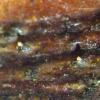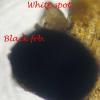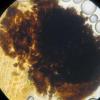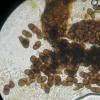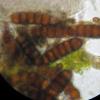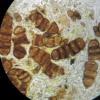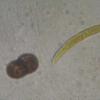
20-12-2025 23:08
Patrice TANCHAUDBonsoir, récolte sur sol sablonneux dans l'arri�

20-12-2025 15:47
Mirek GrycHi.These grew on pine wood that was heavily covere

18-12-2025 21:17
Pol DebaenstThe identification took me to Byssonectria deformi

15-12-2025 07:09
 Danny Newman
Danny Newman
indet. Rutstroemiaceae sp. on unk. fallen leavesMc

19-12-2025 10:10
Patrice TANCHAUDBonjour, récolte réalisée en milieu dunaire, a

18-12-2025 17:23
 Bruno Coué
Bruno Coué
Bonjour,je serais heureux d'avoir votre avis sur c

18-12-2025 18:07
Margot en Geert VullingsThese plumes were found on rotten wood.They strong

17-12-2025 18:35
 Michel Hairaud
Michel Hairaud
Bonjour à tous/Hi to everyone I am passing along
Quite a puzzle
hannie wijers,
27-04-2013 15:57
Maybe someone can shine a light on it for me?
Thanks
Hannie
Mateusz Wilk,
27-04-2013 18:32
Re : Quite a puzzle
Dear Hannie,
I can't say anything constructive about these two dark-spored fungi, unfortunately.
The last one, moon-shaped, looks like conidium of Fusarium, the green colour is strange, however - is it some abberration? If it's conidium, then this white cluster on photo 8 would be the sporodochium of Fusarium (it seems to produce these moon-shaped conidia?).
Interesting thing is, that there are several "white-black" associations. Then it is possible, that the fungus with small, two-celled dark spored (and perithecia) is a teleomorph (maybe Gibberella? I don't know if they have dark spores?), and the white is an anamorph (i.e. Fusarium). Yet this is just an idea.
The third one - no idea at all..
Best wishes,
Mateusz
I can't say anything constructive about these two dark-spored fungi, unfortunately.
The last one, moon-shaped, looks like conidium of Fusarium, the green colour is strange, however - is it some abberration? If it's conidium, then this white cluster on photo 8 would be the sporodochium of Fusarium (it seems to produce these moon-shaped conidia?).
Interesting thing is, that there are several "white-black" associations. Then it is possible, that the fungus with small, two-celled dark spored (and perithecia) is a teleomorph (maybe Gibberella? I don't know if they have dark spores?), and the white is an anamorph (i.e. Fusarium). Yet this is just an idea.
The third one - no idea at all..
Best wishes,
Mateusz
Chris Yeates,
27-04-2013 18:53

Re : Quite a puzzle
Hello Hannie
images 6,7 and 8 show the teliospores of the rust fungus Phragmidium bulbosum - presumably strays from living or dead leaves
images 4 and 5 seem to show the conidia of a Diplodia; given the substrate D. rubi would be the most likely candidate - what were the dimensions of the conidia?
image 7 (upper right middle) shows a conidium of Seimatosporium lichenicola, the imperfect stage of Discostroma corticola, and a very common fungus found on dead Rubus fruticosus stems
amitiés
Chris
images 6,7 and 8 show the teliospores of the rust fungus Phragmidium bulbosum - presumably strays from living or dead leaves
images 4 and 5 seem to show the conidia of a Diplodia; given the substrate D. rubi would be the most likely candidate - what were the dimensions of the conidia?
image 7 (upper right middle) shows a conidium of Seimatosporium lichenicola, the imperfect stage of Discostroma corticola, and a very common fungus found on dead Rubus fruticosus stems
amitiés
Chris
hannie wijers,
27-04-2013 19:00
Re : Quite a puzzle
Mateusz and Chris, my compliments. I hadt expect that someone should have known what all this could be. But I'm happy with it, i can study to these kind of fungi.
Both thanks a lot.
Best wishes
Hannie
Both thanks a lot.
Best wishes
Hannie
hannie wijers,
27-04-2013 19:28
Re : Quite a puzzle
Chris I don't kow what the dimensions of the conidia are. Mostly I have to write it all down and I forgot it this time, sorry.
Best wishes
Hannie
Best wishes
Hannie


